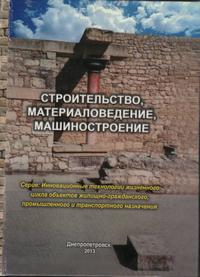Evaluation de l’impacte de la ventilation sur la qualité particulaire d’une ambiance : exposition des personnes selon la zone
Keywords:
Les deux domaines d’étude (Cellule Test du LaSIE et l’ambiance Maria au CSTB) sont équipées d’un système de soufflage à débit variable.Abstract
A series of experimental and numerical studies have been conducted and concern two different fields of study (test cells LaSIE and Maria CSTB). The two air exchange rates were considered: 0.5 and 1.0 vol.h-1. This study to better understand the influence of ventilation on particulate pollution, showing that the movement of particles in the indoor air depends not only on the rate of air exchange, but also used by the flow path air in the atmosphere (ventilation strategy). We found that the influence of the positions of the inlet and the air outlet was stronger for fine particles than for particles of larger size. For configuration bottom-top, the effect of doubling the rate of air exchange resulting in a doubling of the rate of deposition, while for the other configuration top-bottom, the increase in air renewal does not change the deposit particles of a diameter greater than 0.9 m and its effect is reversed for smaller particles. The last part of the study deals with the human exposure to the pollutant.References
F. Wickham, 1992, Air Filters, Australia, AIRH (No. DA 15),.
D.S. Etkin, 1994, Particulates in Indoor Environments: Characterization and Health Effects. Indoor Air Quality Update, Cutter Information Corp.
Jerome Bouilly, KarimLimam, Claudine Beghein, FrancisAllard “Effect ofventilation strategies on particle decay rates indoors: An experimental and modeling study” 2005, International Journal of Atmospheric Environment.
K. LIMAM et al. « Programme Interministériel pour une Meilleure Qualité de l’air à l’échelle locale et urbaine. Caractérisation physico-chimique et étude du transport des particules à l’intérieur des locaux» Projet National PRIMEQUAL2–MEDD– 2002/2007.
W.W. Nazaroff, A.J. Gadgil and C.J. Weschler, 1993, Critique of the use of Deposition Velocity in Modelling Indoor Air Quality, Modelling of Indoor Air Quality and Exposure, ASTM STP 1205, Niren L. Nadga, Ed., American Society for Testing and Material, Philadelphia, pp 81-104.
F.J. Offermann et al., 1985, Control of respirable particles in indoor air with portable air cleaners. Atmospheric Environment, 19, n° 11, 1761-1771.
N.M. Adam and S.B. Riffat, 1993, Deposition of aerosol particles in buildings. Proceedings of Clima 2000, the 9th International Conference on Heating, Ventilating and Air Conditionning, London.
K. Okuyanna, Y. Kousaka, S. Yamamoto and T. Hosokaya, 1986, Particle loss of aerosols in a stirred tank. Journal of Chemical Engineering of Japan, 10, n°2, 142-147.
Byrne M. A., 1995, An Experimental Study of the Deposition of Aerosol on Indoor Surfaces, Thesis for the degree of Doctor of Philosophy of the University College of London and the Diploma of Imperial College,.
M. Abadie, 2000, Contribution à létude de la Pollution Particulaire: Rôle des Parois, Rôle de la Ventilation. Thèse de Doctorat, La Rochelle (France) 196p.
J.O. Hinze, 1987, Turbulence McGraw-Hill Book Company, Inc., 790p.
A.D. Gosman, and E. Ioannides ,1981. Aspects of computer simulation of liquid-fuel combustor. AIAA 19th Aerospace Science Meeting. Vol. 81-0323.
J. Bouilly, K. Limam, C. Beghein et Q. Chen « Impact de la ventilation sur la dispersion des particules dans une enceinte ». Congrès CIFQ, Thermique des systèmes, Université de Laval, Quebec, Canada, 2003. Les deux domaines d’étude (Cellule Test du LaSIE et l’ambiance Maria au CSTB) sont équipées d’un système de soufflage à débit variable.
Downloads
Published
Issue
Section
License
Редакція Видання категорично засуджує прояви плагіату в статтях та вживає всіх можливих заходів для його недопущення. Плагіат розглядається як форма порушення авторських прав і наукової етики.
При виявлені у статті більш ніж 25% запозиченого тексту без відповідних посилань та використання лапок, стаття кваліфікується як така, що містить плагіат. У цьому випадку стаття більше не розглядається редакцією, а автор отримує перше попередження.
Автори, в статтях яких повторно виявлено плагіат, не зможуть публікуватися в усіх журналах Видавництва ДВНЗ «Придніпровська державна академія будівництва та архітектури».
Автори, які публікуються у цьому журналі, погоджуються з наступними умовами:
- Автори залишають за собою право на авторство своєї роботи та передають журналу право першої публікації цієї роботи на умовах ліцензії Creative Commons Attribution License, котра дозволяє іншим особам вільно розповсюджувати опубліковану роботу з обов'язковим посиланням на авторів оригінальної роботи та першу публікацію роботи у цьому журналі.
- Автори мають право укладати самостійні додаткові угоди щодо неексклюзивного розповсюдження роботи у тому вигляді, в якому вона була опублікована цим журналом (наприклад, розміщувати роботу в електронному сховищі установи або публікувати у складі монографії), за умови збереження посилання на першу публікацію роботи у цьому журналі.
- Політика журналу дозволяє і заохочує розміщення авторами в мережі Інтернет (наприклад, у сховищах установ або на особистих веб-сайтах) рукопису роботи, як до подання цього рукопису до редакції, так і під час його редакційного опрацювання, оскільки це сприяє виникненню продуктивної наукової дискусії та позитивно позначається на оперативності та динаміці цитування опублікованої роботи (див. The Effect of Open Access).

